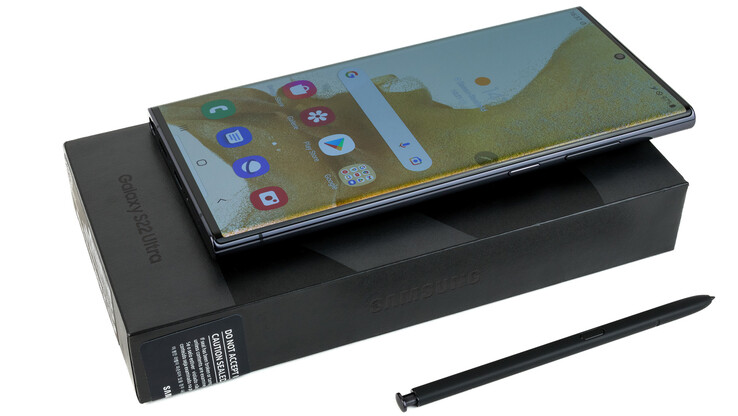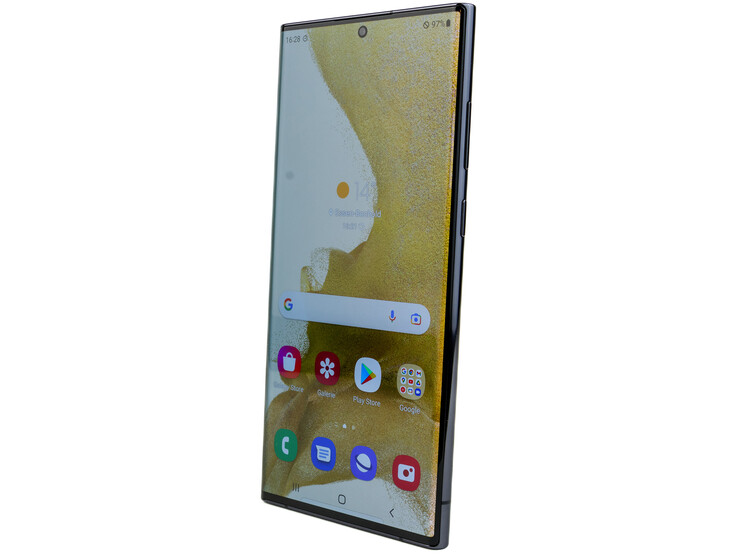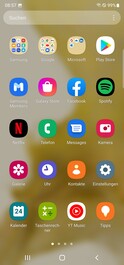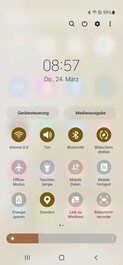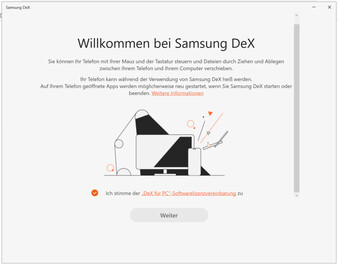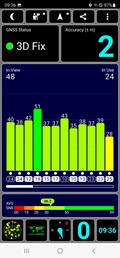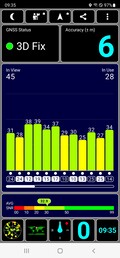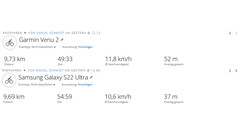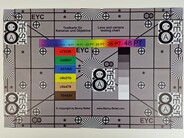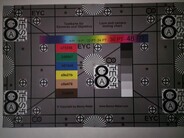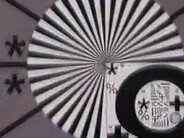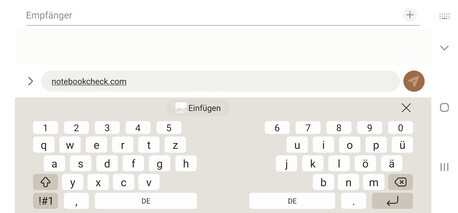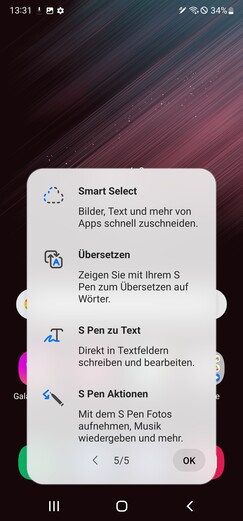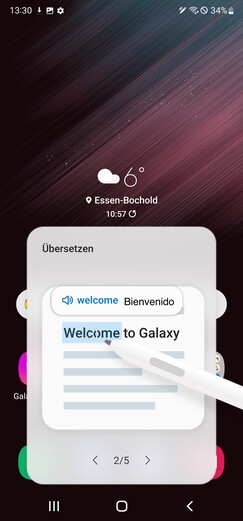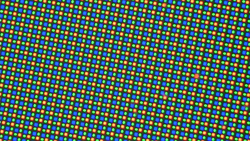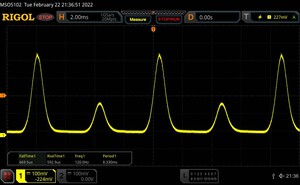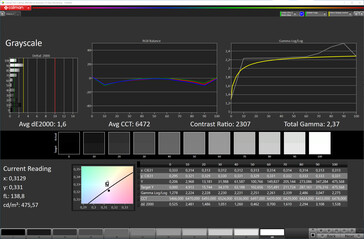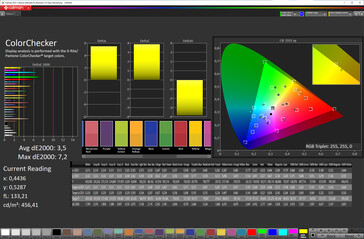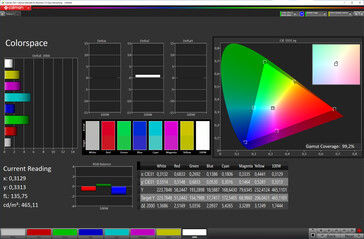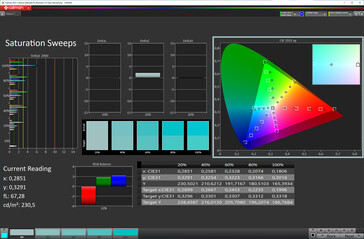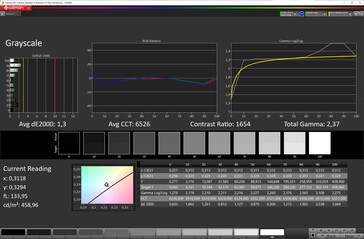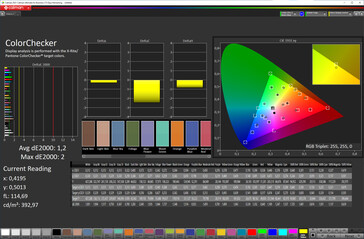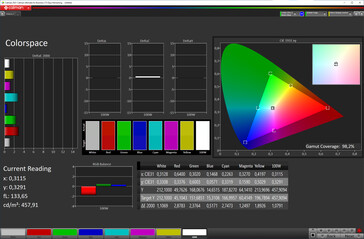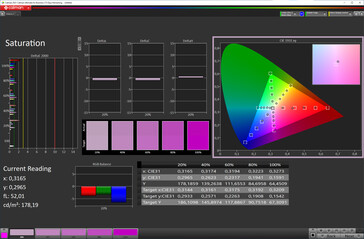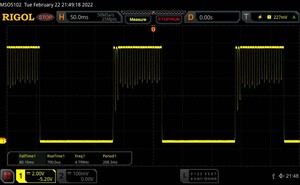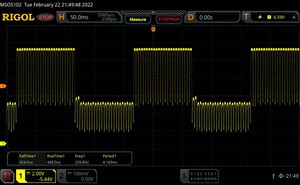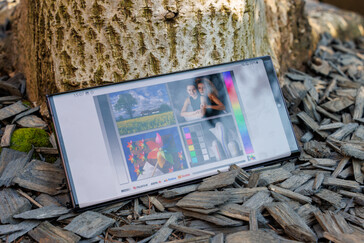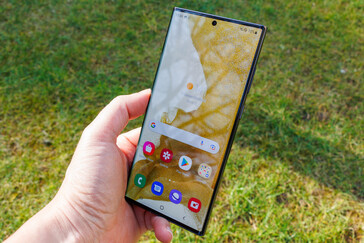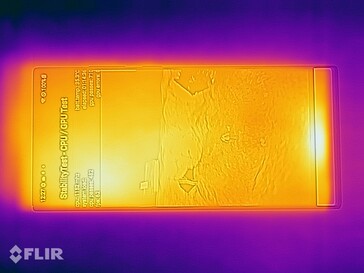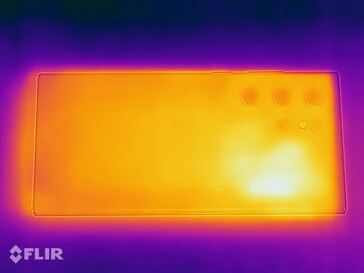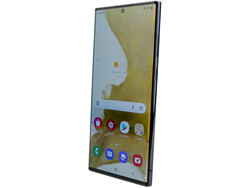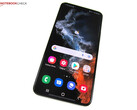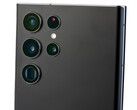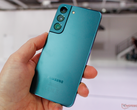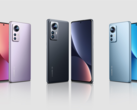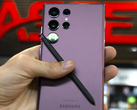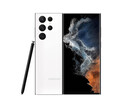Samsung Galaxy S22 Ultra 5G review - The fusion of two smartphone models
The Samsung Galaxy S22 Ultra represents a modern symbiosis of the Galaxy S21 Ultra and the Galaxy Note20 Ultra, with the manufacturer choosing an appearance of the Note series.
Samsung uses the most current technology and equips the smartphone with a super-bright display that supports an adaptive refresh rate of 1 to 120 Hz. While the Exynos 2200 is used in Europe, most other regions of the world get the models based on Snapdragon 8 Gen 1. The S Pen is also included again and can be stored inside the case.
The Galaxy S22 Ultra is offered in four storage versions and up to seven color variants:
- 8 GB RAM and 128 GB internal storage: 1,249 Euros (~$1,371)
- 12 GB RAM and 256 GB internal storage: 1,349 Euros (~$1,481)
- 12 GB RAM and 512 GB internal storage: 1,449 Euros (~$1,591)
- 12 GB RAM and 1024 GB internal storage: 1,649 Euros (~$1,811)
Our test unit is the smallest version in Phantom Black.
Possible Competitors in Comparison
Rating | Date | Model | Weight | Drive | Size | Resolution | Price |
|---|---|---|---|---|---|---|---|
| 89.4 % v7 (old) | 03 / 2022 | Samsung Galaxy S22 Ultra 5G Exynos 2200, Xclipse 920 | 228 g | 128 GB UFS 3.1 Flash | 6.80" | 3088x1440 | |
| 89.6 % v7 (old) | 02 / 2021 | Samsung Galaxy Note20 Ultra Exynos 990, Mali-G77 MP11 | 208 g | 256 GB UFS 3.1 Flash | 6.90" | 3088x1440 | |
| 90.4 % v7 (old) | 02 / 2021 | Samsung Galaxy S21 Ultra Exynos 2100 5G, Mali-G78 MP14 | 227 g | 128 GB UFS 3.1 Flash | 6.80" | 3200x1440 | |
| 87.6 % v7 (old) | 02 / 2022 | Xiaomi 12 Pro SD 8 Gen 1, Adreno 730 | 204 g | 256 GB UFS 3.1 Flash | 6.73" | 3200x1440 | |
| 89.2 % v7 (old) | 04 / 2022 | Oppo Find X5 Pro SD 8 Gen 1, Adreno 730 | 221 g | 256 GB UFS 3.1 Flash | 6.70" | 3216x1440 | |
| 90.5 % v7 (old) | 10 / 2021 | Apple iPhone 13 Pro Max A15, A15 GPU 5-Core | 238 g | 128 GB NVMe | 6.70" | 2778x1284 |
Case - A lot of glass and aluminum for the S22 Ultra
Looking at the front, the Galaxy S22 Ultra is indistinguishable from the Galaxy Note20 Ultra. The form factor is identical, and you only notice that you are looking at a different model when you see the camera. The S22 Ultra is offered in a total of seven colors. While Phantom Black, White, Green, and Burgundy are available from various vendors, Graphite, Red, and Sky Blue remain reserved for the Samsung online shop. The exclusive colors are also not available for the 1-TB model, and they always have a black frame with the back accentuated in the respective color.
At a weight of 228 grams (~8 oz), the Samsung smartphone is fairly heavy. However, this isn't much of a hindrance due to the rounded edges and the fairly large size. The center of mass is also in the bottom half of the smartphone, which we really like. The thickness is specified as 8.1 mm (~0.32 in), and we measure even half a millimeter less. The cameras stick out of the case by up to 2.65 mm (~0.1 in), causing the S22 Ultra to wobble quite a bit on a flat surface.
The workmanship is first class. The gaps are very tight and mostly flush. In our test unit, we only detect a tiny irregularity in the size range of a micrometer in one of the corners on the back. When we try to twist the smartphone, we are only able to get it to produce a very slight creaking noise. Both the front and back are protected by Corning Gorilla Glas Victus+, and the frame is made from the so-called Armor Aluminum, which is supposed to be a particularly robust alloy.
The Galaxy S22 Ultra is protected from dust and water according to the IP68 certification, so it is both dust- and waterproof. However, in the small print, Samsung limits the latter to a depth of 1.5 m submerged in fresh water for up to 30 minutes. The cover of the card slot is flush with the frame, and the card tray can accept up to two nanoSIM cards.
Equipment - Samsung smartphone without microSD support
The Samsung Galaxy S22 Ultra offers a fast USB connection that operates according to the USB 3.2 (Gen. 1) specifications and supports wired image output. Samsung's DeX desktop mode is also included again and can be projected to a connected display either in wired mode or wirelessly (via Miracast).
What used to be a power button is now a multifunction key, allowing you to directly open the Bixby voice assistant. Unfortunately, you cannot replace this with other assistants, but you can assign other functions to the key.
An ultrawideband chip (UWB) is integrated for accurate locating of an optional Galaxy SmartTag Plus. You only have to live without storage expansion via microSD card, since this is not supported.
Software - Current Android and guaranteed updates for a long time
The Samsung Galaxy S22 Ultra is delivered with Google Android 12 and the in-house One UI 4.1 user interface. The smartphone is supposed to receive four major updates, so you can expect to get Android 16. In addition, monthly security patches are guaranteed for five years. This is exemplary!
Samsung's own app store, the Galaxy Store, is also installed again. In addition to Google's child protection, there is also a child mode for very small children. With Samsung DeX, there is an additional desktop mode, which can now not only be displayed on external monitors, but you can also run it as a virtual machine on a Windows PC. In addition to transferring data via drag-and-drop, this also allows running Android apps directly on the PC. A very minor disappointment is that this is only possible in wired mode at this point.
Communication and GNSS - Precise locating and 6-GHz WLAN
The Samsung Galaxy S22 Ultra is able to use all the current mobile communication standards, including 5G. However, the European version continues to lack the mmWave support, even though on paper, the modem of the Exynos 2200 should be able to support this. This leaves the slightly slower 5G Sub6, although, in theory, this also allows data rates of up to 5.1 Gbit/s for download and 2.55 Gbit/s for upload.
In the WLAN, the Galaxy smartphone can use all the available options, supporting Wi-Fi 6E including the 6-GHz band. This allows for extremely high and stable data rates using our Asus ROG Rapture GT-AXE11000 reference router. Unfortunately, this is only the case in the 6-Ghz band, and when Wi-Fi 6 is used in the 5-GHz range, the S22 Ultra remains below the possibilities of this standard.
| Networking | |
| iperf3 transmit AXE11000 | |
| Samsung Galaxy S21 Ultra | |
| Xiaomi 12 Pro | |
| Oppo Find X5 Pro | |
| Average of class Smartphone (49.8 - 1828, n=176, last 2 years) | |
| Samsung Galaxy S22 Ultra 5G | |
| iperf3 receive AXE11000 | |
| Xiaomi 12 Pro | |
| Samsung Galaxy S21 Ultra | |
| Oppo Find X5 Pro | |
| Average of class Smartphone (52 - 1721, n=176, last 2 years) | |
| Samsung Galaxy S22 Ultra 5G | |
| iperf3 transmit AX12 | |
| Apple iPhone 13 Pro Max | |
| Samsung Galaxy S21 Ultra | |
| Samsung Galaxy S21 Ultra | |
| Samsung Galaxy Note20 Ultra | |
| iperf3 receive AX12 | |
| Samsung Galaxy S21 Ultra | |
| Samsung Galaxy S21 Ultra | |
| Samsung Galaxy Note20 Ultra | |
| Apple iPhone 13 Pro Max | |
| iperf3 receive AXE11000 6GHz | |
| Samsung Galaxy S22 Ultra 5G | |
| Average of class Smartphone (451 - 1870, n=94, last 2 years) | |
| iperf3 transmit AXE11000 6GHz | |
| Samsung Galaxy S22 Ultra 5G | |
| Average of class Smartphone (508 - 1945, n=94, last 2 years) | |
Due to the wide GNSS spectrum support of the Galaxy S22 Ultra, it is able to determine its location quickly and with high accuracy even indoors.
When the Samsung smartphone is compared with the Garmin Venu 2 on our short bike tour, it produces a route recording that is as good as that of the fitness smartwatch but even more accurate in determining the altitude. So the S22 Ultra should be very well-suited for all usage scenarios where you need accurate locating.
Telephone Functions and Voice Quality
The Samsung Galaxy S22 Ultra distinguishes itself with excellent voice quality. The earpiece produces a very natural-sounding voice that is unaffected by any minor noise distractions. Even if the surroundings become louder, the noise can be filtered out to a large extent and the voice of the user only sounds slightly nasal. In speaker mode, the voice of the user is reproduced with a minimal echo. With further distance, this effect increases slightly and the volume is reduced, but the voice is still clearly discernable at more than two-and-a-half meters distance.
The Galaxy S22 Ultra supports VoLTE as well as WLAN calling. While it offers two nanoSIM slots, alternatively you can also use an eSIM instead of the second physical SIM. The system does not implement SIP account control.
Cameras - Refinement of a proven setup
According to the datasheet, the cameras of the Galaxy S22 Ultra are technically equal to the predecessor. The changes happened mostly in form of adjustments to the image algorithms and more expansive options offered by the new ISP.
The front camera operates with a 40 MP resolution, with the image pixels getting combined into 10 MP. The autofocus continues to be included. The Galaxy S22 Ultra succeeds in taking very balanced selfies that distinguish themselves by high color accuracy and sharpness. The camera app also offers many adjustment options. Videos can be recorded in up to Ultra HD resolution at up to 60 FPS.
The heart of the quad-camera setup on the back is a 108-MP sensor, which is probably an optimized Samsung ISOCELL HM3. Pixel binning is used again to get better results mainly in weak light conditions. The summing of nine of the pixels that are nominally 0.8 micrometers in size results in a superpixel with an effective size of 2.4 micrometers. The processed result then only has a 12 MP resolution. However, if you prefer, you can also create pictures that have the full resolution or in the RAW format.
The fact that Samsung offers dual-pixel autofocus for all the lenses, as well as an additional Laser AF, warrants positive mention. The main sensor and the two tele lenses support optical image stabilization (OIS).
While the image quality is good in daylight, there is still some room for improvement. The radical sharpening also leads to the loss of some details. The S21 Ultra predecessor initially had some similar problems, but those were gradually remedied through software updates. The ultrawide angle lens delivers good results but shows some deficits in the depth sharpness. However, in contrast to many competitors, there are no visible aberrations. The two tele lenses each have a 10 MP resolution and offer 3x and 10x (periscope camera) optical zoom respectively. While there continues to be the ability for 100x digital zoom, the results are rather mediocre. On the other hand, the image stabilization works surprisingly well, still allowing you to take freehand pictures with zoom levels even above 50x.
Videos can be recorded with the main camera in 8K (24 FPS), but then many of the features and the additional lenses won't be available. You will get all the capabilities in 4K (up to 60 FPS), but you cannot switch between lenses during the recording. This is only possible in Ultra HD at 30 FPS or in Full HD at 30 and 60 FPS. The recordings are very attractive and can even be captured in HDR10+ (30 FPS only).
Image comparison
Choose a scene and navigate within the first image. One click changes the position on touchscreens. One click on the zoomed-in image opens the original in a new window. The first image shows the scaled photograph of the test device.
Main cameraMain cameraUltra-wide angle5x ZoomLow-LightUnder controlled light conditions, we see similar results as in everyday operation. Particularly the high resolution of the image sensor isn't necessarily an advantage, since even in the center of our test chart image, details appear slightly blurry at full size. Gradual color changes are reproduced very cleanly.
We like the color reproduction, which appears relatively natural. Samsung only displays green color tones slightly too saturated.
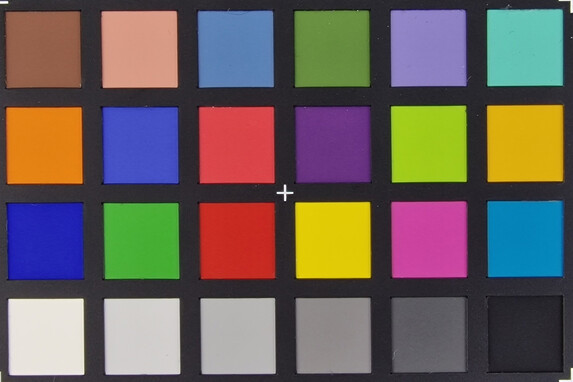
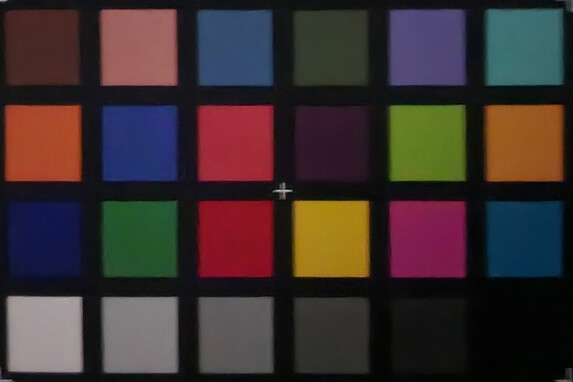
Accessories and Warranty - S22 Ultra again without a charger
The contents of the Samsung Galaxy S22 Ultra box turn out meager, only including a USB-C cable and a SIM tool. Optionally, Samsung also offers protective covers and other accessories for the smartphone.
The warranty is 24 months and can be expanded by the Samsung Care+ insurance package, costing a one-time fee of 149 Euros (~$164).
Input Devices and Operation - Ultrasound fingerprint sensor and S Pen
The glass surface of the Samsung Galaxy S22 Ultra offers excellent sliding characteristics and recognizes up to ten touch points simultaneously, implementing the commands quickly and accurately.
The highlight of the S22 Ultra is the S Pen, which capabilities are identical to that of the Galaxy Note20 Ultra. It also supports Bluetooth as well as gestures for remote control options. You can even switch the pens between the models. The S Pen continues to support offscreen notes, and as usual, you can write on screenshots or format text directly in Word via handwriting recognition. The small pen offers numerous options and a good writing experience.
Biometric security is provided by an ultrasound fingerprint sensor below the display, which unlocks the smartphone at an attractive speed and offers a very high recognition rate. In addition, there is also a less secure face recognition method using the front camera.
Display - Superbright 120-Hz AMOLED in the Galaxy smartphone
The Galaxy S22 Ultra has a 6.8-inch (17.27 cm) dynamic AMOLED display that optionally either offers a QHD+ or Full HD+ resolution, displaying the contents very sharply. The maximum refresh rate is 120 Hz, which is supposed to be lowered via adaptive control down to 1 Hz. However, we are unable to confirm this, since we only see a minimum refresh rate of 24 Hz in the test.
In terms of brightness, the Samsung smartphone makes a powerful effort, achieving up to 1,111 cd/m² with the display of a full white area with an activated brightness sensor. This makes it the brightest smartphone display in our database. With an even distribution of dark and light areas on the panel, the maximum brightness increases to 1,665 cd/m² (APL50) and 1,788 cd/m² (APL18).
Those who don't want to leave the brightness adjustment up to the sensor will get up to 442 cd/m². If the brightness sensor is deactivated, Samsung also offers an "Additional brightness" function in the settings, which increases the brightness up to 716 cd/m². On the other extreme, the panel can be dimmed down to 1.83 cd/m², and here Samsung offers the "Extra dimming" function, allowing you to reduce the brightness to 0.45 cd/m².
We were also able to see the OLED typical flickering in the Galaxy S22 Ultra. However, the frequency is very constant, similar to DC Dimming. Depending on the refresh rate, it operates at 120 or 240 Hz, meaning that the panel should cause relatively little discomfort for sensitive users.
The Samsung smartphone also includes a comprehensively configurable always-on display as well as an additional comfort mode for a display that is easier on the eyes.
| |||||||||||||||||||||||||
Brightness Distribution: 97 %
Center on Battery: 1077 cd/m²
Contrast: ∞:1 (Black: 0 cd/m²)
ΔE ColorChecker Calman: 1.2 | ∀{0.5-29.43 Ø4.77}
ΔE Greyscale Calman: 1.3 | ∀{0.09-98 Ø5}
98.2% sRGB (Calman 2D)
Gamma: 2.37
CCT: 6526 K
| Samsung Galaxy S22 Ultra 5G Dynamic AMOLED, 3088x1440, 6.8" | Samsung Galaxy Note20 Ultra Dynamic AMOLED, 3088x1440, 6.9" | Samsung Galaxy S21 Ultra Dynamic AMOLED 2X, 3200x1440, 6.8" | Xiaomi 12 Pro AMOLED, 3200x1440, 6.7" | Oppo Find X5 Pro AMOLED, 3216x1440, 6.7" | Apple iPhone 13 Pro Max OLED, 2778x1284, 6.7" | |
|---|---|---|---|---|---|---|
| Screen | -137% | -37% | -19% | -7% | 14% | |
| Brightness middle (cd/m²) | 1077 | 860 -20% | 910 -16% | 959 -11% | 746 -31% | 1049 -3% |
| Brightness (cd/m²) | 1093 | 878 -20% | 913 -16% | 977 -11% | 744 -32% | 1060 -3% |
| Brightness Distribution (%) | 97 | 96 -1% | 98 1% | 96 -1% | 97 0% | 98 1% |
| Black Level * (cd/m²) | ||||||
| Colorchecker dE 2000 * | 1.2 | 4.5 -275% | 2 -67% | 1.1 8% | 0.9 25% | 0.78 35% |
| Colorchecker dE 2000 max. * | 2 | 10.4 -420% | 3.1 -55% | 3.1 -55% | 1.6 20% | 1.72 14% |
| Greyscale dE 2000 * | 1.3 | 2.4 -85% | 2.2 -69% | 1.9 -46% | 1.6 -23% | 0.8 38% |
| Gamma | 2.37 93% | 2 110% | 2.06 107% | 2.22 99% | 2.23 99% | 2.181 101% |
| CCT | 6526 100% | 6466 101% | 6512 100% | 6498 100% | 6499 100% | 6559 99% |
* ... smaller is better
Screen Flickering / PWM (Pulse-Width Modulation)
| Screen flickering / PWM detected | 120 Hz | ||
The display backlight flickers at 120 Hz (worst case, e.g., utilizing PWM) . The frequency of 120 Hz is very low, so the flickering may cause eyestrain and headaches after extended use. In comparison: 53 % of all tested devices do not use PWM to dim the display. If PWM was detected, an average of 8084 (minimum: 5 - maximum: 343500) Hz was measured. | |||
Measurements with a fixed zoom level and various brightness adjustments (Rigol MSO5102)
We evaluate the accuracy of the display with a photo spectrometer and the CalMAN analysis software. We get the most natural display in the "Natural" mode, where the grayscale, as well as the colors, are close to the ideals. However, then only the smaller sRGB color space is available.
In the state of delivery, the "Vivid" mode produces cooler colors, but if you move the white balance slider to the first step called "Warm," the grayscale is as good as in the "Natural" mode. Only the colors aren't as accurate, since the saturation turns out stronger in the "Vivid" mode. On the other hand, then the larger DCI-P3 color space will be available.
Display Response Times
| ↔ Response Time Black to White | ||
|---|---|---|
| 1.501 ms ... rise ↗ and fall ↘ combined | ↗ 0.7 ms rise | |
| ↘ 0.801 ms fall | ||
| The screen shows very fast response rates in our tests and should be very well suited for fast-paced gaming. In comparison, all tested devices range from 0.1 (minimum) to 240 (maximum) ms. » 8 % of all devices are better. This means that the measured response time is better than the average of all tested devices (20.2 ms). | ||
| ↔ Response Time 50% Grey to 80% Grey | ||
| 0.872 ms ... rise ↗ and fall ↘ combined | ↗ 0.448 ms rise | |
| ↘ 0.424 ms fall | ||
| The screen shows very fast response rates in our tests and should be very well suited for fast-paced gaming. In comparison, all tested devices range from 0.165 (minimum) to 636 (maximum) ms. » 3 % of all devices are better. This means that the measured response time is better than the average of all tested devices (31.6 ms). | ||
Performance - The Exynos 2200 isn't the announced game changer
In Europe, the Samsung Galaxy S22 Ultra uses an Exynos 2200 with 8 or 12 GB of LPDDR5 working memory. Why Samsung decided to take a step back and use merely 8 GB of RAM in the small storage configuration remains a mystery to us.
Unfortunately, the benchmarks do not confirm that this was a good decision. While the CPU performance is definitely very good, the Exynos 2200 places behind the Snapdragon 8 Gen 1 and Apple's A15. In the multi-core test of Geekbench, even its predecessor, the Exynos 2100, is able to barely beat it.
The AnTuTu benchmark shows similar performance differences. However, those can also be traced back to the insufficient cooling of the SoC, since the result increases to 878,398 points when we run the AnTuTu in the fridge. The Exynos also limps behind in the AI acceleration. While it succeeds in doubling the performance of its predecessor in the Procyon benchmark, the Snapdragon 8 is still six times as fast.
| UL Procyon AI Inference for Android - Overall Score NNAPI | |
| Oppo Find X5 Pro | |
| Xiaomi 12 Pro | |
| Average of class Smartphone (3769 - 81594, n=132, last 2 years) | |
| Samsung Galaxy S22 Ultra 5G | |
| Average Samsung Exynos 2200 (10374 - 10841, n=2) | |
| Samsung Galaxy S21 Ultra | |
| Samsung Galaxy Note20 Ultra | |
| Geekbench ML | |
| 0.5 TensorFlow Lite CPU 0.5 | |
| Samsung Galaxy S22 Ultra 5G | |
| Average Samsung Exynos 2200 (n=1) | |
| Oppo Find X5 Pro | |
| 0.5 TensorFlow Lite GPU | |
| Oppo Find X5 Pro | |
| Samsung Galaxy S22 Ultra 5G | |
| Average Samsung Exynos 2200 (n=1) | |
| 0.5 TensorFlow Lite NNAPI / Core ML | |
| Oppo Find X5 Pro | |
| Samsung Galaxy S22 Ultra 5G | |
| Average Samsung Exynos 2200 (n=1) | |
| AImark - Score v2.x | |
| Samsung Galaxy S21 Ultra | |
| Apple iPhone 13 Pro Max | |
| Xiaomi 12 Pro | |
| Average Samsung Exynos 2200 (6217 - 6487, n=3) | |
| Samsung Galaxy S22 Ultra 5G | |
| Oppo Find X5 Pro | |
The brand new Xclipse 920 is used as the integrated graphics unit. It is based on AMD's RDNA 2 architecture, and the Korean manufacturer praises it as a game-changer.
The impression from the CPU and system benchmarks also continues in the graphics benchmarks. The Galaxy S22 Ultra also places behind its competitors here, with some of them even being up to 33% faster. While the support of raytracing (RT) for the first time and variable rate shading (VRS) are great in theory, they don't bring any benefit without the software support for now.
GFXBench 3.0: on screen Manhattan Onscreen OGL | 1920x1080 1080p Manhattan Offscreen
GFXBench (DX / GLBenchmark) 2.7: T-Rex Onscreen | 1920x1080 T-Rex Offscreen
GFXBench 3.1: on screen Manhattan ES 3.1 Onscreen | 1920x1080 Manhattan ES 3.1 Offscreen
GFXBench: on screen Car Chase Onscreen | 1920x1080 Car Chase Offscreen | on screen Aztec Ruins High Tier Onscreen | 2560x1440 Aztec Ruins High Tier Offscreen | on screen Aztec Ruins Normal Tier Onscreen | 1920x1080 Aztec Ruins Normal Tier Offscreen
Basemark ES 3.1 / Metal: offscreen Overall Score
Basemark GPU 1.2: 1920x1080 Vulkan Medium Offscreen | Vulkan Medium Native | OpenGL Medium Native | 1920x1080 OpenGL Medium Offscreen
| 3DMark / Wild Life Score | |
| Xiaomi 12 Pro | |
| Oppo Find X5 Pro | |
| Apple iPhone 13 Pro Max | |
| Samsung Galaxy S22 Ultra 5G | |
| Samsung Galaxy S21 Ultra | |
| Samsung Galaxy Note20 Ultra | |
| 3DMark / Wild Life Unlimited Score | |
| Apple iPhone 13 Pro Max | |
| Xiaomi 12 Pro | |
| Oppo Find X5 Pro | |
| Samsung Galaxy S22 Ultra 5G | |
| Samsung Galaxy S21 Ultra | |
| Samsung Galaxy Note20 Ultra | |
| 3DMark / Wild Life Extreme | |
| Apple iPhone 13 Pro Max | |
| Xiaomi 12 Pro | |
| Oppo Find X5 Pro | |
| Samsung Galaxy S22 Ultra 5G | |
| Samsung Galaxy S21 Ultra | |
| Samsung Galaxy Note20 Ultra | |
| 3DMark / Wild Life Extreme Unlimited | |
| Apple iPhone 13 Pro Max | |
| Oppo Find X5 Pro | |
| Xiaomi 12 Pro | |
| Samsung Galaxy S22 Ultra 5G | |
| Samsung Galaxy S21 Ultra | |
| Samsung Galaxy Note20 Ultra | |
| 3DMark / Sling Shot Extreme (ES 3.1) Unlimited | |
| Oppo Find X5 Pro | |
| Xiaomi 12 Pro | |
| Samsung Galaxy S22 Ultra 5G | |
| Samsung Galaxy S21 Ultra | |
| Samsung Galaxy Note20 Ultra | |
| Apple iPhone 13 Pro Max | |
| 3DMark / Sling Shot Extreme (ES 3.1) Unlimited Graphics | |
| Oppo Find X5 Pro | |
| Apple iPhone 13 Pro Max | |
| Xiaomi 12 Pro | |
| Samsung Galaxy S22 Ultra 5G | |
| Samsung Galaxy S21 Ultra | |
| Samsung Galaxy Note20 Ultra | |
| 3DMark / Sling Shot Extreme (ES 3.1) Unlimited Physics | |
| Samsung Galaxy S21 Ultra | |
| Samsung Galaxy Note20 Ultra | |
| Xiaomi 12 Pro | |
| Samsung Galaxy S22 Ultra 5G | |
| Oppo Find X5 Pro | |
| Apple iPhone 13 Pro Max | |
| GFXBench 3.0 / Manhattan Onscreen OGL | |
| Xiaomi 12 Pro | |
| Samsung Galaxy S22 Ultra 5G | |
| Samsung Galaxy Note20 Ultra | |
| Samsung Galaxy S21 Ultra | |
| Apple iPhone 13 Pro Max | |
| Oppo Find X5 Pro | |
| GFXBench 3.0 / 1080p Manhattan Offscreen | |
| Xiaomi 12 Pro | |
| Apple iPhone 13 Pro Max | |
| Samsung Galaxy S22 Ultra 5G | |
| Oppo Find X5 Pro | |
| Samsung Galaxy S21 Ultra | |
| Samsung Galaxy Note20 Ultra | |
| GFXBench (DX / GLBenchmark) 2.7 / T-Rex Onscreen | |
| Xiaomi 12 Pro | |
| Samsung Galaxy S22 Ultra 5G | |
| Samsung Galaxy Note20 Ultra | |
| Samsung Galaxy S21 Ultra | |
| Apple iPhone 13 Pro Max | |
| Oppo Find X5 Pro | |
| GFXBench (DX / GLBenchmark) 2.7 / T-Rex Offscreen | |
| Xiaomi 12 Pro | |
| Apple iPhone 13 Pro Max | |
| Oppo Find X5 Pro | |
| Samsung Galaxy S22 Ultra 5G | |
| Samsung Galaxy S21 Ultra | |
| Samsung Galaxy Note20 Ultra | |
| GFXBench 3.1 / Manhattan ES 3.1 Onscreen | |
| Xiaomi 12 Pro | |
| Samsung Galaxy S22 Ultra 5G | |
| Samsung Galaxy Note20 Ultra | |
| Apple iPhone 13 Pro Max | |
| Oppo Find X5 Pro | |
| Samsung Galaxy S21 Ultra | |
| GFXBench 3.1 / Manhattan ES 3.1 Offscreen | |
| Xiaomi 12 Pro | |
| Apple iPhone 13 Pro Max | |
| Samsung Galaxy S22 Ultra 5G | |
| Oppo Find X5 Pro | |
| Samsung Galaxy S21 Ultra | |
| Samsung Galaxy Note20 Ultra | |
| GFXBench / Car Chase Onscreen | |
| Apple iPhone 13 Pro Max | |
| Samsung Galaxy S22 Ultra 5G | |
| Oppo Find X5 Pro | |
| Xiaomi 12 Pro | |
| Samsung Galaxy Note20 Ultra | |
| Samsung Galaxy S21 Ultra | |
| GFXBench / Car Chase Offscreen | |
| Apple iPhone 13 Pro Max | |
| Xiaomi 12 Pro | |
| Samsung Galaxy S22 Ultra 5G | |
| Oppo Find X5 Pro | |
| Samsung Galaxy S21 Ultra | |
| Samsung Galaxy Note20 Ultra | |
| GFXBench / Aztec Ruins High Tier Onscreen | |
| Apple iPhone 13 Pro Max | |
| Oppo Find X5 Pro | |
| Samsung Galaxy Note20 Ultra | |
| Samsung Galaxy S22 Ultra 5G | |
| Xiaomi 12 Pro | |
| Samsung Galaxy S21 Ultra | |
| GFXBench / Aztec Ruins High Tier Offscreen | |
| Oppo Find X5 Pro | |
| Apple iPhone 13 Pro Max | |
| Xiaomi 12 Pro | |
| Samsung Galaxy S22 Ultra 5G | |
| Samsung Galaxy S21 Ultra | |
| Samsung Galaxy Note20 Ultra | |
| GFXBench / Aztec Ruins Normal Tier Onscreen | |
| Apple iPhone 13 Pro Max | |
| Oppo Find X5 Pro | |
| Samsung Galaxy Note20 Ultra | |
| Xiaomi 12 Pro | |
| Samsung Galaxy S22 Ultra 5G | |
| Samsung Galaxy S21 Ultra | |
| GFXBench / Aztec Ruins Normal Tier Offscreen | |
| Apple iPhone 13 Pro Max | |
| Oppo Find X5 Pro | |
| Xiaomi 12 Pro | |
| Samsung Galaxy S21 Ultra | |
| Samsung Galaxy S22 Ultra 5G | |
| Samsung Galaxy Note20 Ultra | |
| Basemark ES 3.1 / Metal / Overall Score | |
| Samsung Galaxy S22 Ultra 5G | |
| Samsung Galaxy S21 Ultra | |
| Xiaomi 12 Pro | |
| Basemark GPU 1.2 / Vulkan Medium Offscreen | |
| Samsung Galaxy S22 Ultra 5G | |
| Samsung Galaxy S21 Ultra | |
| Xiaomi 12 Pro | |
| Basemark GPU 1.2 / Vulkan Medium Native | |
| Samsung Galaxy S22 Ultra 5G | |
| Samsung Galaxy S21 Ultra | |
| Xiaomi 12 Pro | |
| Basemark GPU 1.2 / OpenGL Medium Native | |
| Samsung Galaxy S21 Ultra | |
| Samsung Galaxy S22 Ultra 5G | |
| Xiaomi 12 Pro | |
| Basemark GPU 1.2 / OpenGL Medium Offscreen | |
| Samsung Galaxy S21 Ultra | |
| Samsung Galaxy S22 Ultra 5G | |
| Xiaomi 12 Pro | |
In the browser benchmarks, the Galaxy S22 Ultra shows a good performance, constantly placing only behind the iPhone.
| Jetstream 2 - 2.0 Total Score | |
| Apple iPhone 13 Pro Max (Safari 15) | |
| Average of class Smartphone (23.8 - 387, n=147, last 2 years) | |
| Oppo Find X5 Pro (Chrome 99) | |
| Samsung Galaxy S22 Ultra 5G (Chrome 99) | |
| Xiaomi 12 Pro (Chrome 97) | |
| Average Samsung Exynos 2200 (13.8 - 107.4, n=4) | |
| Samsung Galaxy S21 Ultra (Chrome 88) | |
| Samsung Galaxy Note20 Ultra (Chrome 84) | |
| JetStream 1.1 - Total Score | |
| Apple iPhone 13 Pro Max (Safari 15) | |
| Samsung Galaxy S22 Ultra 5G (Chrome 99) | |
| Oppo Find X5 Pro (Chrome 99) | |
| Average Samsung Exynos 2200 (118.9 - 200, n=3) | |
| Xiaomi 12 Pro (Chrome 97) | |
| Samsung Galaxy S21 Ultra (Chrome 88) | |
| Samsung Galaxy Note20 Ultra (Chrome 84) | |
| Speedometer 2.0 - Result 2.0 | |
| Apple iPhone 13 Pro Max (Safari 15) | |
| Average of class Smartphone (15.2 - 643, n=119, last 2 years) | |
| Average Samsung Exynos 2200 (105 - 137, n=4) | |
| Samsung Galaxy S22 Ultra 5G (Chrome 99) | |
| Oppo Find X5 Pro (Chrome 99) | |
| Samsung Galaxy S21 Ultra (Chrome 88) | |
| Xiaomi 12 Pro (Chrome 97) | |
| WebXPRT 3 - Overall | |
| Apple iPhone 13 Pro Max (Safari 15) | |
| Average of class Smartphone (38 - 380, n=30, last 2 years) | |
| Average Samsung Exynos 2200 (124 - 153, n=3) | |
| Oppo Find X5 Pro (Chrome 99) | |
| Samsung Galaxy S21 Ultra (Chrome 88) | |
| Samsung Galaxy S22 Ultra 5G (Chrome 99) | |
| Xiaomi 12 Pro (Chrome 97) | |
| Samsung Galaxy Note20 Ultra (Chrome 84) | |
| Octane V2 - Total Score | |
| Apple iPhone 13 Pro Max (Safari 15) | |
| Average of class Smartphone (2228 - 126661, n=194, last 2 years) | |
| Average Samsung Exynos 2200 (34055 - 51202, n=4) | |
| Oppo Find X5 Pro (Chrome 99) | |
| Samsung Galaxy S22 Ultra 5G (Chrome 99) | |
| Xiaomi 12 Pro (Chrome 97) | |
| Samsung Galaxy S21 Ultra (Chrome 88) | |
| Samsung Galaxy Note20 Ultra (Chrome 84) | |
| Mozilla Kraken 1.1 - Total | |
| Samsung Galaxy Note20 Ultra (Chrome 84) | |
| Samsung Galaxy S21 Ultra (Chrome 88) | |
| Xiaomi 12 Pro (Chrome 97) | |
| Average Samsung Exynos 2200 (840 - 1566, n=4) | |
| Samsung Galaxy S22 Ultra 5G (Chrome 99) | |
| Average of class Smartphone (257 - 28190, n=154, last 2 years) | |
| Oppo Find X5 Pro (Chrome 99) | |
| Apple iPhone 13 Pro Max (Safari 15) | |
| Sunspider - 1.0 Total Score | |
| Samsung Galaxy S21 Ultra (Chrome 88) | |
| Xiaomi 12 Pro (Chrome 97) | |
| Average Samsung Exynos 2200 (n=1) | |
| Samsung Galaxy S22 Ultra 5G (Chrome 99) | |
| Average of class Smartphone (n=1last 2 years) | |
* ... smaller is better
While the speed of the UFS 3.1 storage is very high as expected, Samsung doesn't achieve a top position in this area. However, these differences aren't noticeable anymore in everyday operation.
| Samsung Galaxy S22 Ultra 5G | Samsung Galaxy Note20 Ultra | Samsung Galaxy S21 Ultra | Xiaomi 12 Pro | Oppo Find X5 Pro | Average 128 GB UFS 3.1 Flash | Average of class Smartphone | |
|---|---|---|---|---|---|---|---|
| AndroBench 3-5 | -20% | 1% | 25% | -25% | -17% | 32% | |
| Sequential Read 256KB (MB/s) | 1653 | 1782 8% | 1710 3% | 1620 -2% | 1410 -15% | 1569 ? -5% | 2235 ? 35% |
| Sequential Write 256KB (MB/s) | 1074 | 802 -25% | 1077 0% | 1465 36% | 894 -17% | 768 ? -28% | 1871 ? 74% |
| Random Read 4KB (MB/s) | 322.3 | 186.7 -42% | 316.7 -2% | 324.9 1% | 183.7 -43% | 244 ? -24% | 297 ? -8% |
| Random Write 4KB (MB/s) | 273.1 | 217.7 -20% | 279.5 2% | 448.9 64% | 210.4 -23% | 243 ? -11% | 343 ? 26% |
Games - A lot of wasted potential
Theoretically, the Xclipse 920 of the Galaxy S22 Ultra offers more than sufficient performance to display all the current games smoothly in high-quality settings, but at this point, the reality looks different.
It is not that it really has any problems in keeping the display from stuttering since our measurements with GameBench show that there are no significant frame drops in the tested games. Instead, the problem is that High-Res or high frame rate settings aren't available at all. For example, "PUBG Mobile," which is even praised as a partner game, can only be played in the HD setting at 30 FPS. We would have expected twice the frame rate here and also higher detail levels. Similar behavior can be seen in "Call of Duty," which we could only play at low detail levels, and "Wild Rift" was lacking the HFR settings for 90 or 120 FPS that are even available in the Galaxy S21 FE. Apparently, there is still some work to be done in terms of optimizing the new GPU, so that it is able to do justice to its high-end ambitions.
Emissions - The cooling throttles the Galaxy S22 Ultra
Temperatures
Although the surface temperatures of the Samsung Galaxy S22 Ultra increase noticeably under constant load, the smartphone only becomes hand warm in some places.
In order to better evaluate the performance of the SoC in this situation, we run the GFXBench battery test as well as the stress tests of 3DMark. Even though the first test completes its run, the app crashes when calling up the results. On the other hand, 3DMark shows a significant performance drop of more than 42%. While this is quite a lot, the S22 Ultra still performs at a similar level as the Xiaomi 12 Pro with a Snapdragon 8 Gen 1.
(+) The maximum temperature on the upper side is 36.1 °C / 97 F, compared to the average of 35.2 °C / 95 F, ranging from 21.9 to 247 °C for the class Smartphone.
(+) The bottom heats up to a maximum of 34.8 °C / 95 F, compared to the average of 34 °C / 93 F
(+) In idle usage, the average temperature for the upper side is 27.1 °C / 81 F, compared to the device average of 32.9 °C / 91 F.
3DMark Wild Life Stress Test
Speakers
The two speakers of the Samsung Galaxy S22 Ultra produce a good sound output and can become very loud. Even though the lower frequency range is lacking, the sound of the Samsung smartphone is still relatively balanced.
Those who like to listen to the sound wirelessly via Bluetooth will have to continue to be content with a slightly reduced selection of supported audio codecs (SBC, AAC, aptX, and LDAC). On the other hand, you can output sound to two devices simultaneously but will then only be able to use the SBC codec. In addition, Samsung is the only Android smartphone manufacturer that allows limiting the volume in the settings, which is very useful, particularly for children.
Wired headphones can be connected via the USB port, but you may need an optional adapter.
Samsung Galaxy S22 Ultra 5G audio analysis
(+) | speakers can play relatively loud (90.2 dB)
Bass 100 - 315 Hz
(-) | nearly no bass - on average 24.4% lower than median
(±) | linearity of bass is average (8.8% delta to prev. frequency)
Mids 400 - 2000 Hz
(±) | higher mids - on average 6.3% higher than median
(+) | mids are linear (4.8% delta to prev. frequency)
Highs 2 - 16 kHz
(±) | higher highs - on average 5.6% higher than median
(+) | highs are linear (4.1% delta to prev. frequency)
Overall 100 - 16.000 Hz
(±) | linearity of overall sound is average (18.5% difference to median)
Compared to same class
» 20% of all tested devices in this class were better, 9% similar, 71% worse
» The best had a delta of 11%, average was 35%, worst was 134%
Compared to all devices tested
» 41% of all tested devices were better, 8% similar, 51% worse
» The best had a delta of 4%, average was 24%, worst was 134%
Apple iPhone 13 Pro Max audio analysis
(±) | speaker loudness is average but good (80.2 dB)
Bass 100 - 315 Hz
(-) | nearly no bass - on average 16.8% lower than median
(±) | linearity of bass is average (9.5% delta to prev. frequency)
Mids 400 - 2000 Hz
(+) | balanced mids - only 4.1% away from median
(+) | mids are linear (4.2% delta to prev. frequency)
Highs 2 - 16 kHz
(+) | balanced highs - only 4.8% away from median
(±) | linearity of highs is average (7.5% delta to prev. frequency)
Overall 100 - 16.000 Hz
(±) | linearity of overall sound is average (16.7% difference to median)
Compared to same class
» 8% of all tested devices in this class were better, 6% similar, 86% worse
» The best had a delta of 11%, average was 35%, worst was 134%
Compared to all devices tested
» 28% of all tested devices were better, 7% similar, 65% worse
» The best had a delta of 4%, average was 24%, worst was 134%
Battery Life - 5000 mAh for a galactic runtime
Power Consumption
In terms of power consumption, the Galaxy S22 Ultra shows itself as very efficient as long as there is no load. Once there is more demand for the Exynos, the smartphone pulls more power from its reserves than the competitors.
When connected via wire, the Samsung smartphone can be charged at up to 45 watts. Wirelessly, up to 15 watts are possible and reverse wireless charging is also supported. Using an original 25-Watt charger from Samsung, a complete recharge takes 98 minutes, with the 50% mark being reached after 43 minutes and the 80% mark, after 72 minutes.
| Off / Standby | |
| Idle | |
| Load |
|
Key:
min: | |
| Samsung Galaxy S22 Ultra 5G 5000 mAh | Samsung Galaxy Note20 Ultra 4500 mAh | Samsung Galaxy S21 Ultra 5000 mAh | Xiaomi 12 Pro 4600 mAh | Oppo Find X5 Pro 5000 mAh | Apple iPhone 13 Pro Max 4352 mAh | Average Samsung Exynos 2200 | Average of class Smartphone | |
|---|---|---|---|---|---|---|---|---|
| Power Consumption | -10% | -28% | -21% | -29% | -9% | -20% | -38% | |
| Idle Minimum * (Watt) | 0.58 | 0.65 -12% | 1.06 -83% | 0.94 -62% | 1.24 -114% | 0.6 -3% | 0.668 ? -15% | 0.847 ? -46% |
| Idle Average * (Watt) | 0.71 | 1.06 -49% | 1.19 -68% | 1.24 -75% | 1.39 -96% | 1.5 -111% | 1.038 ? -46% | 1.448 ? -104% |
| Idle Maximum * (Watt) | 1.16 | 1.49 -28% | 1.2 -3% | 1.34 -16% | 1.42 -22% | 1.6 -38% | 1.218 ? -5% | 1.633 ? -41% |
| Load Average * (Watt) | 7.07 | 4.91 31% | 6.46 9% | 5.7 19% | 3.58 49% | 3.5 50% | 9.43 ? -33% | 6.96 ? 2% |
| Load Maximum * (Watt) | 11.32 | 10.29 9% | 10.76 5% | 8.12 28% | 6.99 38% | 4.8 58% | 11.5 ? -2% | 11.3 ? -0% |
* ... smaller is better
Power Consumption: Geekbench (150 cd/m²)
Power Consumption: GFXBench (150 cd/m²)
Battery Life
We are positively surprised about the battery life since it is really good with the Galaxy S22 Ultra. We should also note that the tests were run in the high QHD-Plus resolution and with adaptive display control.
The S22 Ultra is able to surpass the rest of the Android smartphones, particularly in the realistic WLAN test at an adjusted display brightness (150 cd/m²).
| Samsung Galaxy S22 Ultra 5G 5000 mAh | Samsung Galaxy Note20 Ultra 4500 mAh | Samsung Galaxy S21 Ultra 5000 mAh | Xiaomi 12 Pro 4600 mAh | Oppo Find X5 Pro 5000 mAh | Apple iPhone 13 Pro Max 4352 mAh | |
|---|---|---|---|---|---|---|
| Battery runtime | -22% | -13% | -13% | -12% | 30% | |
| Reader / Idle (h) | 32.9 | 20.4 -38% | 23.5 -29% | 33.9 3% | 21.2 -36% | 47.4 44% |
| H.264 (h) | 18 | 16.6 -8% | 21.8 21% | 13.1 -27% | 19 6% | 25.4 41% |
| WiFi v1.3 (h) | 14.1 | 10.7 -24% | 11.7 -17% | 12.8 -9% | 13.1 -7% | 17.8 26% |
| Load (h) | 6.8 | 5.6 -18% | 5.1 -25% | 5.6 -18% | 6.1 -10% | 7.5 10% |
Pros
Cons
Verdict - Samsung still has some work to do
With the Galaxy S22 Ultra, Samsung combines the top models of the Galaxy S and Galaxy Note series in a single device. This is a good and consequent decision that should particularly please fans of the Note series since compromises with the camera are now history. Even though the smartphone is a very successful product, it still suffers from a few childhood illnesses.
Surely the SoC policy of Samsung is questionable. Because of the cooperation with AMD and the mighty fuss that Samsung created around this, the Exynos was expected eagerly. But unfortunately, the new Xclipse GPU doesn't really look like a finished product yet, so gamers (still) have to be content with reduced details and low frame rates in a high-end smartphone. While Samsung will probably still bring some improvements in this regard via updates, considering the premium price, users should surely be able to expect a more mature product here.
The same goes for the adaptive control of the refresh rate of the AMOLED display. Even though Samsung promises between 1 and 120 Hz, the lowest refresh rate is much higher at 24 Hz. So there is still some work to do for Samsung here as well, particularly since there continue to be some stutters in the system, which hasn't improved much until now even after two updates.
The Samsung Galaxy S22 Ultra is a powerful piece of technology the competitors will have to be measured against, even if not everything runs smoothly in the beginning yet.
However, we would still recommend the Galaxy S22 Ultra, since the problems we mentioned will probably be resolved via update and such a long update period of four or five years can otherwise only be found with Google. In addition, you probably get one of the brightest and most accurate displays that can be found in a smartphone, a powerful S Pen, the most current communication technology, a great voice quality, eSIM support, Samsung Dex at this point even for Windows, UWB, and even a really good battery life.
A good alternative with pen support can also be found in the Motorola Edge 30 Pro. And without a pen but also with a powerful performance and great cameras, we should also mention the Xiaomi 12 Pro or the Find X5 Pro.
Price and Availability
While you can purchase the Samsung Galaxy S22 Ultra directly from the online shop of the manufacturer, alternatively it is also available from other vendors such as Amazon and BestBuy starting from $1,200.
Samsung Galaxy S22 Ultra 5G
- 08/30/2022 v7 (old)
Daniel Schmidt




